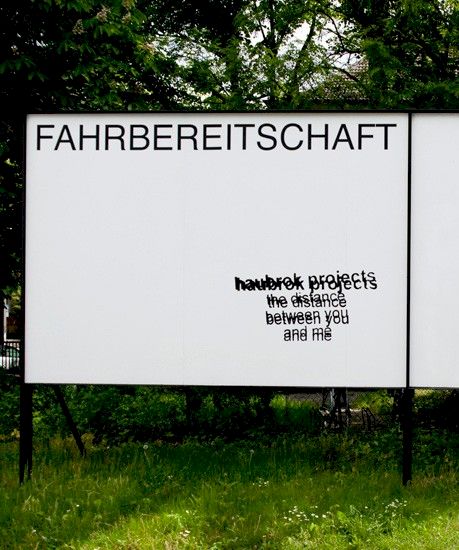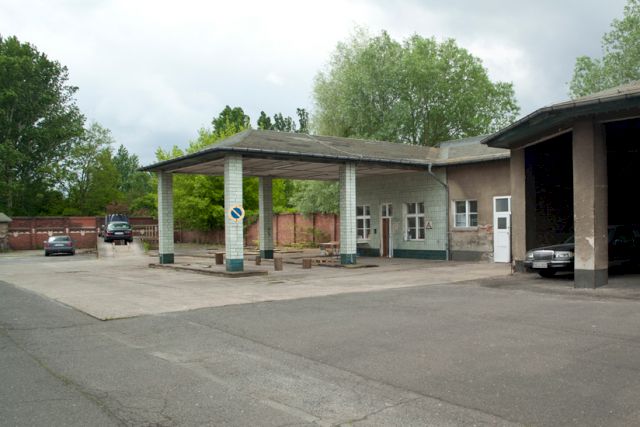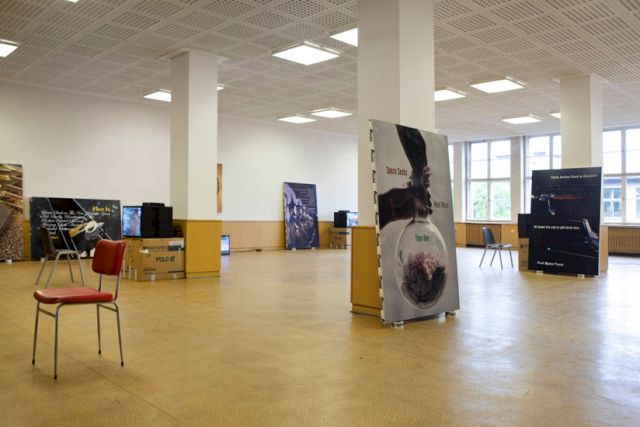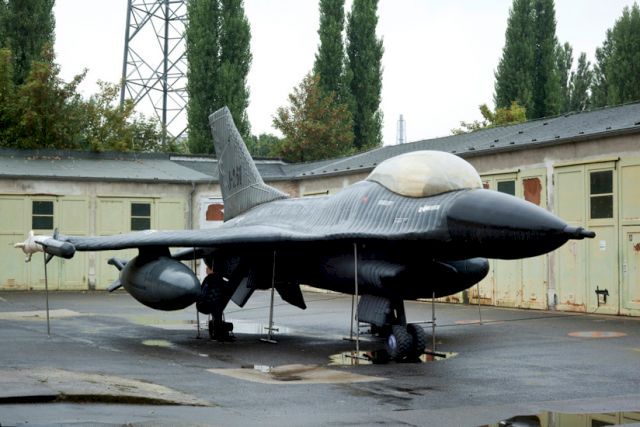BMW Art Guide by Independent Collectors
Conceptual Authenticity
Sammlung Barbara und Axel Haubrok - haubrok projects - Berlin, Germany

As gentrification takes hold across Berlin, artists and collectors are in constant search for the authentic. The district Lichtenberg is a world away from the trendy galleries and shops of Mitte and Kreuzberg, yet just 20 minutes from either. This is where the Social Realism of the GDR, became real. Think industrial zones, wholesale markets and endless prefabricated tower blocks standing like sentries, guarding against hipsterfication. This part of the city has virtually remained static, reveling in its bleak totalitarianism.
It’s late October, the weather befits the surrounding greyness. I stand outside FAHRBEREITSCHAFT, which translates in English into RIDE, as a tow truck delivers its car cargo inside the compound. It’s a confusing premise until a billboard gives an indication to the shared actuality of the site; a poster advertising a series of Bruce Nauman’s video works, and another whereby the type simply reads, Stanley Brouwn.


In former times, the compound was headquarters to the GDR’s government car pool that used to ferry VIP and international guests around East Germany. Now in what feels like a socialist proposition, amongst the numerous motor-orientated businesses, it is home to one of Berlin’s leading Conceptual Art collections and foundations, plus 35 spacious artist studios situated in the former garages.
My guide today is Axel Haubrok, who purchased the property in 2012. Over the last 30 years, along with his wife Barbara, they have accrued an exemplary collection of 900 works, including important Conceptual Art pieces by the likes of Martin Creed, Heimo Zobernig, Christopher Williams and Martin Boyce, to name just a few. Previously, they showed their collection at a large exhibition space located on Strausbergerplatz in trendy Friedrichshain.
Now they have 18,000 square metres of living history. A small, former liquor distillery was all that remained after the devastation of the Second World War, so the numerous garages; warehouses and buildings have a pure GDR design sensibility. One of the pebble-dashed buildings, houses the exhibitions. Inside, the features remained unchanged from the GDR days, devoid of any contrived decoration. "Gentrification is not what I’m aiming for," explains Mr. Haubrok. "Whilst we’re still looking at what to restore and improve, the more I get into this place, the more I want to leave it as it is."


The eggshell white and mustard GDR tones are muted in their tonality. The patterned linoleum, ceramic tiles and concrete floors combine to create differing spaces to show works from the collection. Yet this time capsule from another epoch also adds another dimension - the austere functionality itself creating something almost exotic, in which to view the art.
Currently showing is the enigmatic and reclusive 80-year-old artist Stanley Brouwn, one of the most important representatives of the Fluxus movement. His habitual obsessions with geography, distance, direction and dimension have spanned his entire career.
"He is measuring the world," says Mr. Haubrok, as he explains the artist’s fascination with measurement, which plays out with works including singular vertical and horizontal lines, exactly one meter in length. The artist also distorts the premise with his own units of measurements, such as the Brouwn cubit, the Brouwn foot (26cm to be precise), and the Brouwn step. Another integral statement in the collection are Brouwn's artist books that have held exactly the same steady line of simplicity and impeccable measurements since the 1970's.
For me, there is also a duality between the work and the past history of the space. In a land in which citizens were once so regimented, I reflect how Brouwn makes me question the subjectivity of measurement. How it can be so controlled, yet also so easily contrived or distorted. Just like society.

Mr. Haubrok takes me on a tour of the site, which invokes the feeling of being on a film set. Today, anyway, it is. A film crew has set up inside one of the former administrative buildings that features a fully preserved GDR wood panelled bar and dining room. One floor up, a photographic exhibition is taking place. Meanwhile at street level, both mechanics and artists toil diligently in their garages. Honecker would be proud.
The Stanley Brouwn exhibition runs until May 2015.
Lollie Barr is an Australian freelance features journalist and fiction author. She resides in Berlin.
All images via haubrok projects / Photos: Ludger Paffrath
More Information on Haubrok Projects